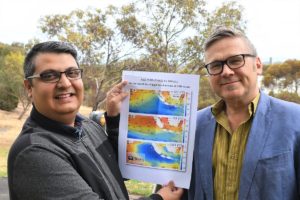
New research that identifies triggers causing equatorial Indian Ocean monsoon events could provide critical early warnings about extreme weather events and rainfall patterns that subsequently affect Australia.
The research led by Flinders University Associate Professor in Oceanography, Jochen Kaempf, has studied the Indian Ocean Dipole (IOD) and situations that lead to so-called positive IOD events, which induce devastating floods over East Africa but severe droughts in countries surrounding Indonesia including Australia.

Positive IOD events are characterised by the unusual appearance of vast areas of anomalously cold surface water off the southwest Sumatran coast in Austral winter months that strongly modify the monsoonal winds and rainfall patterns.
The Flinders researchers demonstrate with their study that slight seasonal wind changes over the eastern equatorial Indian Ocean are the cause of the sea temperature variation that develops about 500km farther in the south.
Associate Professor Kaempf explains that identifying this likely trigger mechanism of positive IOD events – which ultimately results in rainfall decrease across Australia - provides the scientific community with a starting point for investigating the impact of climate change on the monsoon dynamics and variability in the Indian Ocean.
The research, Sea Surface Temperature Variability in the Eastern Intertropical Indian Ocean – On the Search for Trigger Mechanisms of IOD Events, by Jochen Kaempf and Ankit Kavi, is published in the journal Deep-Sea Research Part II, in a special volume on findings of the Second International Indian Ocean Expedition (IIOE2).

